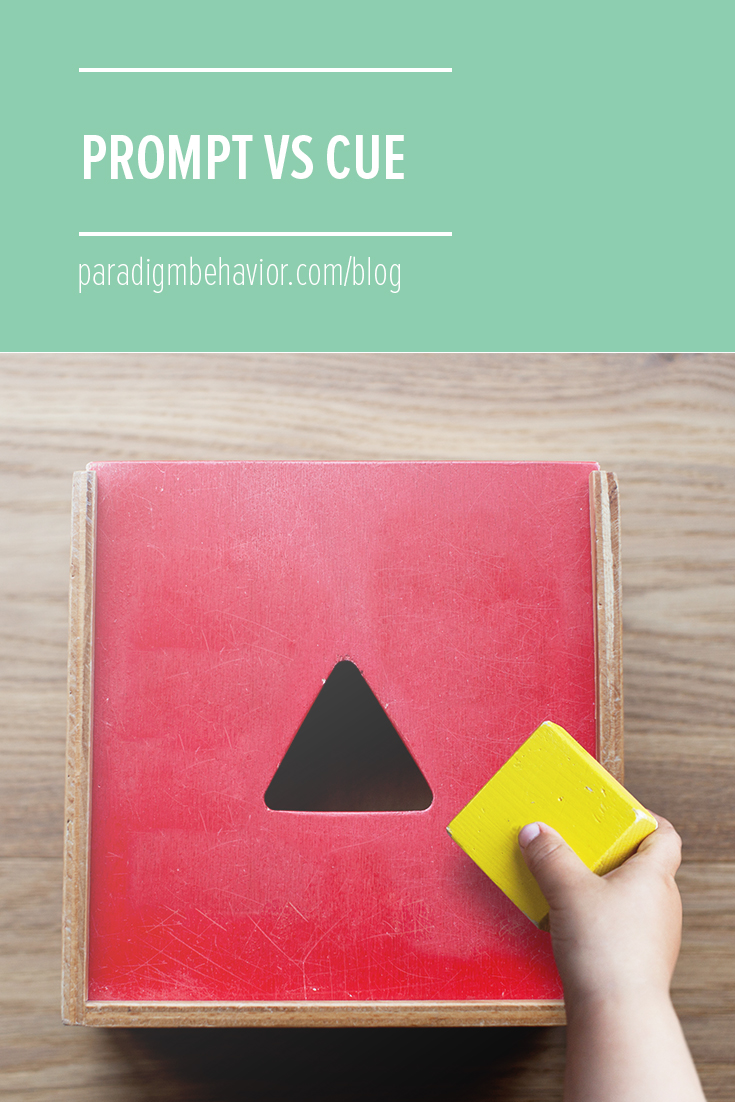Today I’m going to clarify the difference between a prompt and a cue through examples. Before we dive in, let’s define:
A prompt is extra support that is added in the form of hints or reminders for a person to achieve success in a skill (Mayer, Sulzer-Azaroff & Wallace, 2012). Usually, the prompt being added does not look like anything relating to the skill.
A cue is something in the environment relating to the skill that naturally reminds the person to do the skill (Bondy, 2017)
For example, if you were to guide your child’s hand to turn on the light, your hand-over-hand support has nothing to do with turning on the light. This is a prompt because you are adding support to teach your child a new skill. However, what if your child entered a dark room and turned on the light? In this case, the darkness of the room is considered your child’s cue to turn on the light.
Prompts are used to teach a new skill like washing your hands, eating with a fork, and doing laundry. As mentioned earlier, these are supports added to help the person learn, but the supports do not relate to the skill. Here are some example prompt types:
Gesture - simple gestures like pointing to the next step (e.g. pointing to the light switch or tapping the light switch)
Model - showing/demonstrating how to complete the task for the learner to imitate (e.g. you turning the light on and then back off for the learner to imitate)
Physical - guiding the learner to do the task through touch (e.g. hand-over-hand to flip on the light switch)
Visual - picture or written instructions (e.g. a picture of a person flipping the light switch)
Verbal - saying the instructions (e.g. “turn on the light”)
These prompts are used initially to teach a skill and then faded so the learner can do the task by themselves without prompts.
Cues are the end goal when fading prompts, so when the learner naturally sees the cue, they will complete the skill they’ve already learned. Think about things you do in everyday life. Cues like hand soap will remind you to wash your hands, or your plate will remind you to grab a fork. Cues will also vary depending on the person and situation. Let me guide you through another example:
- What are some cues for you to do laundry?
- Full laundry hamper
- Want to wear a favorite shirt that’s dirty
- Ran out of underwear
- Traveling soon and need to pack
I’m sure the list can go on and on, but notice there are several cues that will tell you to do laundry. All the cues also relate to the skill (doing laundry).
For more trainings like this on prompts, purchase my Roadmap to ABA Parent Training on Prompts. New updates to Prompts will be available soon. If you already have Prompts, you’ll receive a notification to update your download for free once it’s available :)
Learn about different prompt types to increase independence when teaching a new skill.
Approximately 5.5 hours of parent training with 10 parent goals offering flow charts and role-play opportunities for parents to work with trainers and learn how to prompt at home.
What's Included:
1 Parent Guide - What is ABA? (PDF)
1 set of SMART Goals (PDF)
1 Parent Workbook (PDF)
1 Progress Tracker (MS Excel)
Bondy, A. (2017). Prompting, stimulus control, error correction: Why are they crucial to teaching in autism and why are we making so many mistakes? [Video webinar]. Retrieved from https://www.abacnj.com/product/abacgivesabacliveccbss/
Mayer, G., Sulzer-Azaroff, B. & Wallace, M. (2012). Behavior analysis for lasting change (2nd ed). Cornwall-on-Hudson, NY: Sloan Publishing, LLC.


